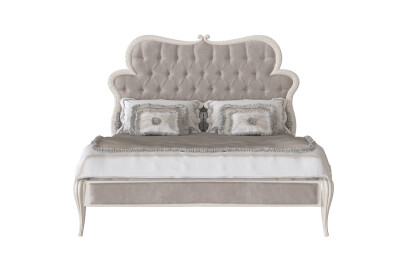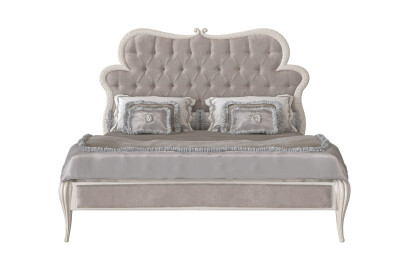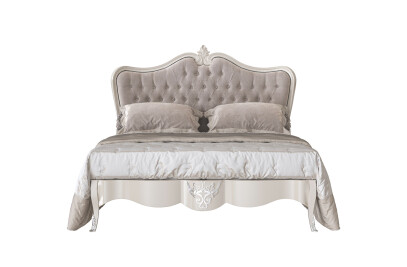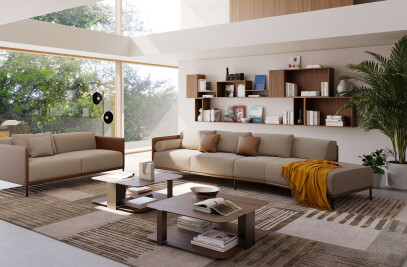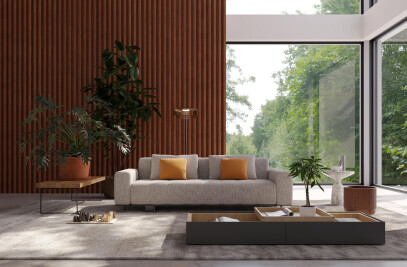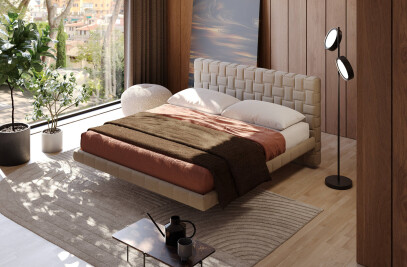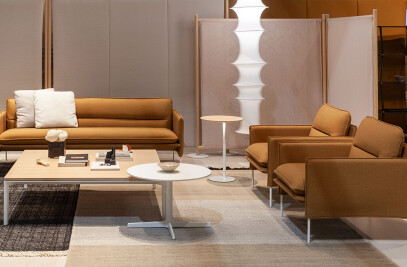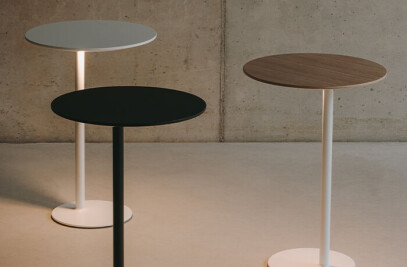The solo exhibition “Beast of Burden” presents a selection of the multifaceted minimalist artworks by Austrian artist Anneliese Schrenk. Expansive site-specific installations, large-scale paintings and works on paper epitomize her survey of body and space.
Geometric and organic shapes are predominating when entering the exhibition. The mostly dark colors of the exhibits highly contrast the white walls. A long, whip-like strap suspended from the ceiling winds its way through the vast longitudinal gallery space and guides the visitor's first steps inside. The viewer is confronted with objects that do not reveal their nature immediately: A long belt mounted on the wall draws a jagged line, rising and falling between ceiling and floor. At the opposite end of the corridor, black straps enter the space, hanging heavily from the ceiling, weighed down by iron pieces. A large-scaled rectangle resembles a monochrome canvas with abstract gestures. On closer inspection it becomes apparent, that there are no brushstrokes of paint, but rather the surface itself embodies the structure. Successively, the materiality of the objects becomes evident. The viewer recognizes a familiar texture, and occasionally, even a characteristic smell can be noticed: These objects are made of leather. Abstract lines suddenly become more figurative, depicting scars, scratches, wrinkles and other marks of a former living body.
Anneliese Schrenk creates her artworks primarily from thick, tanned cowhides – hides that have been discarded by factories due to their many natural features and processing errors during manufacturing. The resulting texture is a substantial element in Schrenk's practice: Based on the idea of Duchamp's readymades, she displays the raw material on stretcher frames, thus creating images out of the predetermined structure. In other works, the hides are processed with water, heat, sandpaper or acid. Thereby, the artist adds painterly marks to the original surfaces. Cut and stretched through space, crumpled or folded, the hides enter the third dimension as well, performing as sculptures or installations. Schrenk even adopts the texture of the leather hides in another medium: In the appendix to the gallery, the walls are densely covered with paper-based works. Therefore, the artist uses the technique of frottage, tracing pavements, walls and floors. Thus producing a structure that refers to the leather works, she adds an abstract dimension to the initial material.
By disconnecting the leather from its usual purpose, Schrenk seeks to reflect on the origin of the hides: as skin of a being, it once has been the defining shell of the body, a boundary between the self and the world outside. In this context, the thinly cut strips that stretch all over the white wall bring the vulnerability of our bodies and lives to our minds. Schrenk’s concept of skin guides beyond, conceiving it besides its literal sense as being outer shells in general. The artist provides subtle indications to the many levels of meaning: some works evoke the connection to a piece of clothing, which today rather than our own skin builds the layer between the body and the outside – it is not by chance that we often call it our ‘second skin’. In a broader context, architecture provides a further shell. By reproducing the lifelines of buildings and streets into her works on paper and thereby repeating the structure of leather, she explicitly refers back to her concept. Thinking further, even the space beyond can be considered as our outermost shell that encloses all – delimiting, but connecting alike.
Body and space are the two constitutive elements of earthly existence, and so they are in Schrenk's artistic approach to fundamental questions in life: Her practice often begins with a measurement of objects and beings, transferring the proportions into her artworks. What is the size of a cow's skull compared to the human one's? And how could the relation between the human skull and its body be seen? By focusing simple proportions, Schrenk does not only relate beings to one another, but also investigates their condition in space. Consequently, the whole environment becomes subject of her measuring. Therefore, her artworks' impression vary relating to the space in which they are installed: The thin leather strips are constantly scanning and tracing the surroundings. They enter into dialogue with the architecture, emerging from the walls and repeating the contours of the distinctive gallery’s pillars. Thus they create a three-dimensional drawing of the architectural form.
Schrenk's visual language can hardly be grasped. Her works deny a rigid classification to one artistic genre. Titled as drawing, painting or sculpture, their materiality seems to negate the traditional notions. Creating a fascinating ambiguity, the artworks of the exhibition “Beast of Burden” invite the visitor to pause and let the obscurities work.
















